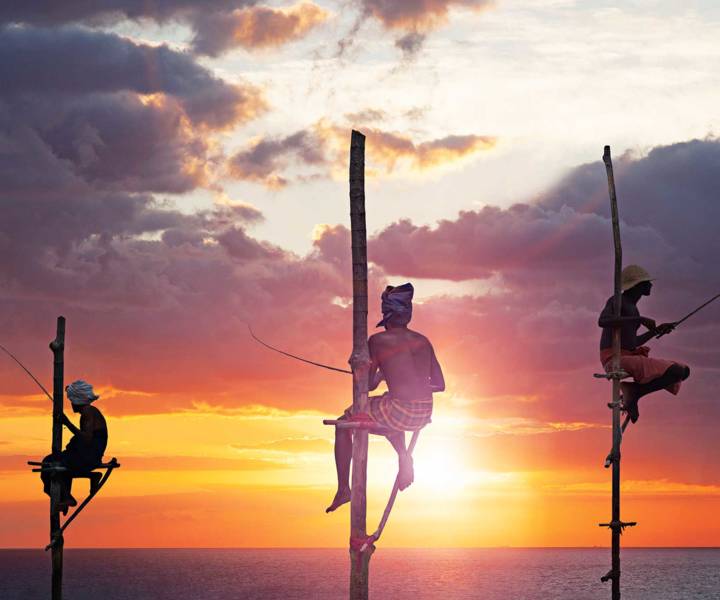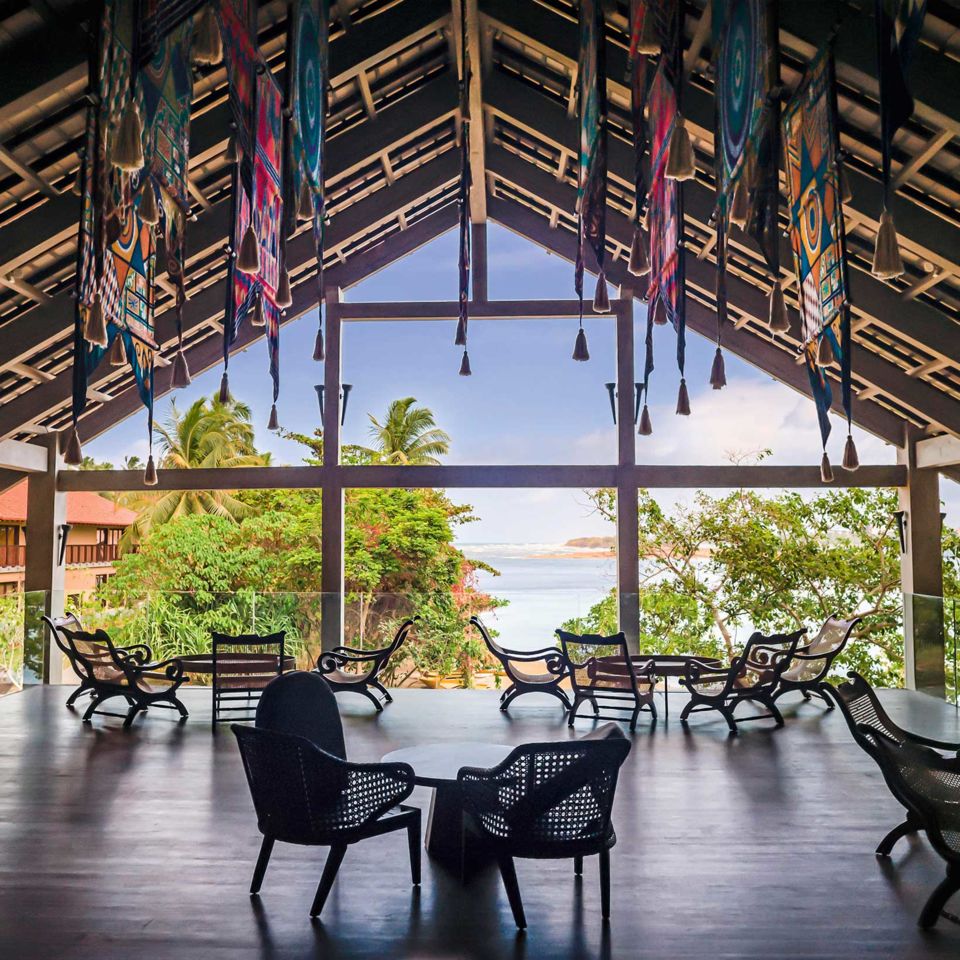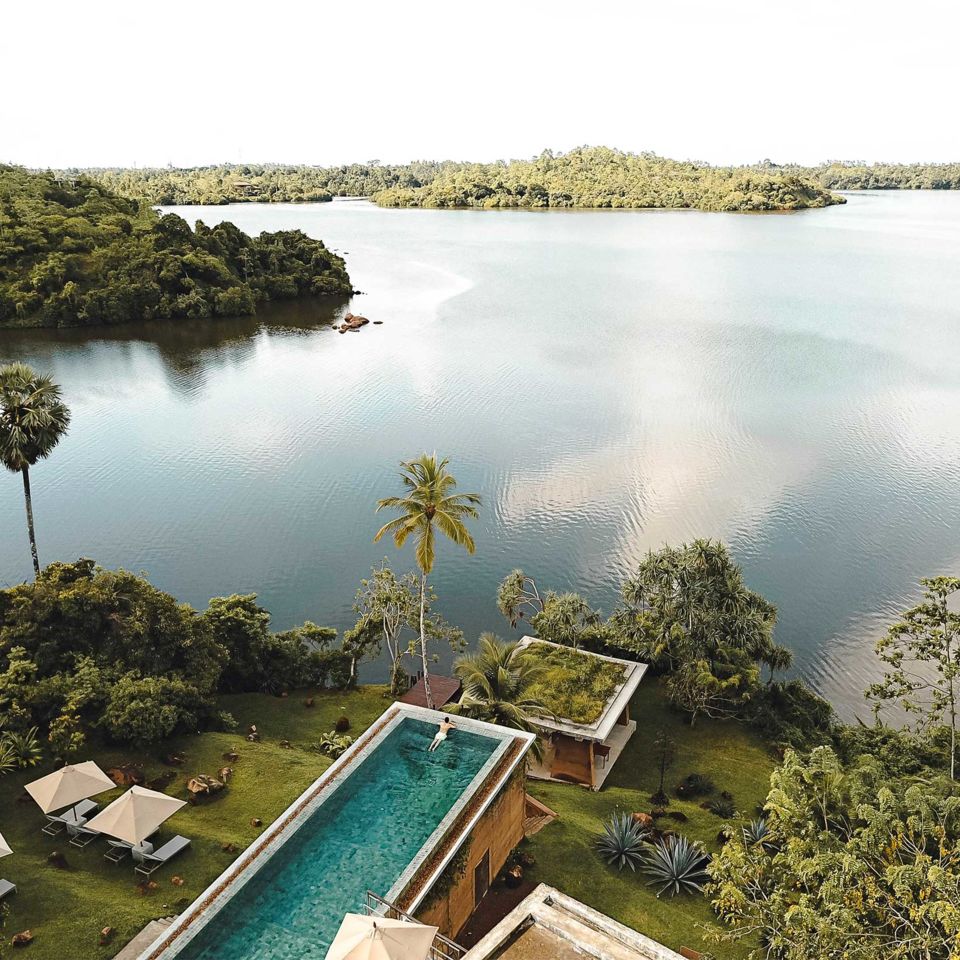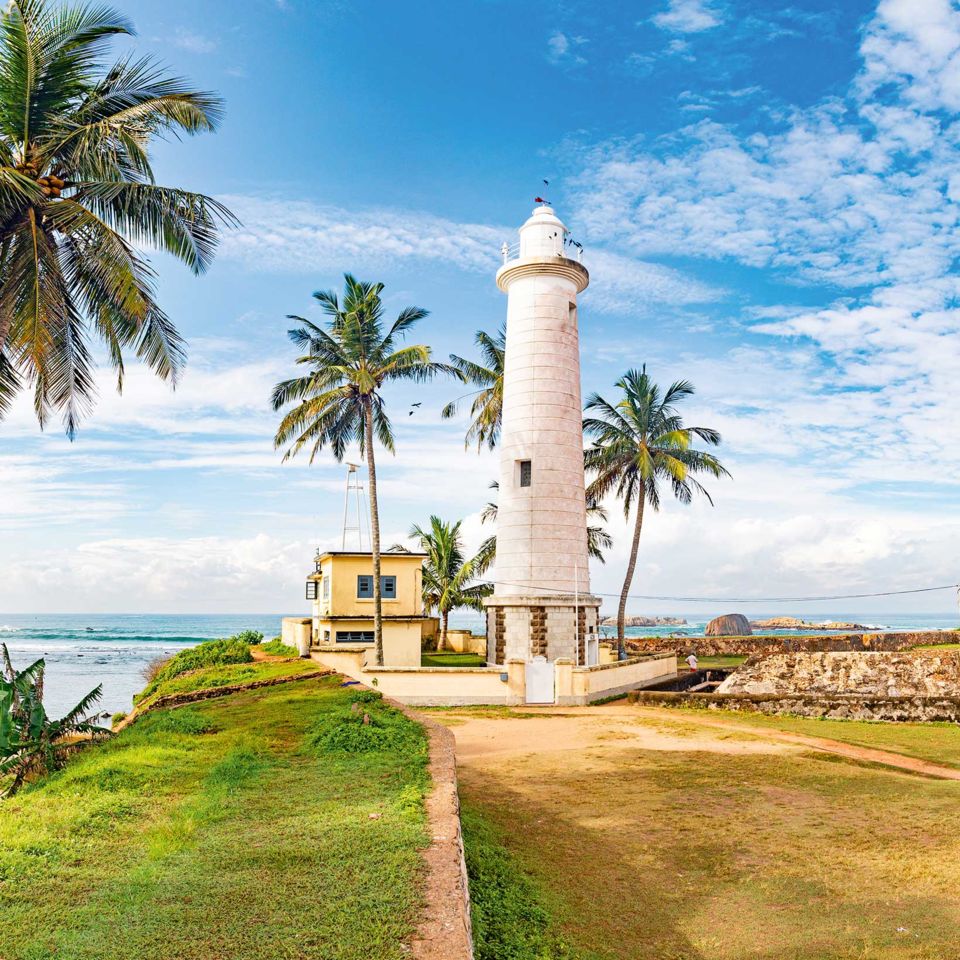Travel
Travel review: Sri Lanka
by Selina Scott

Sri Lanka, the jewel island, has had its share of trauma, says former newsreader Selina Scott, but now the smiles are back, and its natural lushness will blow you away.
Do you want a man like that?’ exclaimed the mischievous Sri Lankan receptionist, gesturing towards a 6ft 7in blond Belarusian, stripped to the waist, who had wandered into the hotel spa, looking for a sauna. Eyeing his ripped physique, without waiting for me to reply, she laughed. ‘I do’, she declared, ‘sexy!’
This spirited encounter as I sipped herbal tea was something I hadn’t anticipated when I left a rain-lashed Britain, travelling solo and incognito for Sri Lanka, the stunning tropical island shaped like a teardrop off the coast of India. I imagined Sri Lanka, where so many tears over too many years had been shed, to be still in a state of trauma. I was anchoring ITV’s News at Ten in the 1980s when civil war devastated this exotic, former British colony. It took an interminable 26 years for peace to be negotiated. Then the Boxing Day tsunami of 2004 struck, killing 40,000 people. In 2019 came more misery. It was Easter, families were on holiday when Isis terrorists bombed three churches around the country and three hotels in the capital, Colombo, killing 269 people.
Then, amid revelations of governmental corruption on an incomprehensible scale, Covid closed the island. Sri Lanka was on its knees. Tourism, one of its biggest money earners, dead. Yet here I was on this jewel of an island in the warm grip of an August monsoon,greeted, universally, not with sadness but humour, humility and gaiety.
A glance at someone sweeping the leaves on the road? The broadest of smiles flashed in response. When I told the young bartender, Nilan, at the Anantara Kalutara Resort, who mixed a knock-out virgin mojito, that I liked the perfume he wore, his face lit up. It’s called Fogg (a popular aftershave) he countered with a cheeky grin, and wrote down its name for me.
‘Sri Lankans have been tested many times,’ explained Disi, the Buddhist driver who greeted me at Colombo airport after a 13-hour plane journey, with cool water, coconut shortbread and an iced towel he procured from a cold box in the boot of his car, ‘but Sri Lankans are happy. They believe all this will pass. We also have so much natural produce – coconuts, bananas, pineapples, papayas – we will never starve.’
BACK TO NATURE
It is nature in all its emerald lushness in Sri Lanka that blows you away. Cinnamon and tea plantations, king coconut trees, rice paddies, jackfruit in abundance, overwhelm the landscape heading south. My odyssey into this tropical paradise began at the vaulted, colonial-style Anantara Kalutara, built on a sliver of a peninsula between the roaring Indian Ocean and a tranquil lagoon where local boys practise volleyball and fishermen try their luck as the sun goes down. It’s a hotel that attracts long-stay holidaymakers with a private, exclusive ambience centred on individual villas, with pools offering sanctuary to the weariest long-haul traveller. I was immediately whisked away to one of them to spend a heavenly few days serenaded by an ocean stirred into restlessness by the monsoon.
Apart from the hunky Belarusian in the spa, Qatari and Chinese families were also, quietly, in residence. Here, like me, to experience the pristine beauty of an island, now very security conscious and safe, endowed with eight Unesco world heritage sites, the largest gathering of wild elephants and one of the highest densities of leopards in the world.

EARTH, WIND AND FIRE
I was also here to engage with Ayurveda, one of the oldest healing systems in the world, practised in Sri Lanka for thousands of years. Ayurveda has become fashionable in the West because it holistically encompasses the mind and body in its quest for wellness. For some reason, during recent months, I was becoming too quick to anger often at the smallest provocation. And I reckoned if anywhere could re-establish my equilibrium, an island 5,000 miles away, which had endured so many appalling setbacks, might just do the trick.
I discovered Madurangi, a quietly knowledgeable Ayurvedic doctor at the Peace Haven Tangalle, Anantara’s second hotel, which sits in 22 acres, like a garden of Eden, on the edge of the Indian Ocean. The Peace Haven is popular with families who come to explore golden beaches, national parks and Sri Lanka’s ancient civilisation. ‘Luxury today is all about peace, the simple things in life and a connection to nature,’ the hotel’s general manager, Roberto Simone, tells me as we walk in the hotel’s grounds, a biosphere of wild birds and animals endemic to the island.
Macaque monkeys, with their clinging babies, swoop from the banyan trees, monitor lizards ever so slowly case the ground looking for bugs, and Dr Madurangi, who trained at the University of Colombo for five years, adeptly tracks down Ayurvedic ‘doshas’ in her wellness centre. A dosha is a vital force. We all have three (Tri) vital forces… vata (wind), pitta (fire) and kapha (earth), which need to be synchronised for optimum health.
After my first session with her, she smiled and told me: ‘You are too much pitta.’ Fire. Well, yes. Of course. ‘I will prescribe head massages, full body massages and herbal baths over three days to dampen your hotheadedness,’ she said. ‘And by the way, no spicy food, which means any curry is strictly out of bounds. And after all this, you must relax and bathe yourself in nature.’
She instructed her therapist, Reshan, to go to work. Herbs grown in the Peace Haven garden, stirred in exotic wonderfully perfumed oils, were pummelled into me. My hair, soused. My ‘third eye’, (on my forehead) linked to my pituitary gland, was stimulated with a mesmeric drip of hot then cool oils. And finally came the full-body massage. Reshan’s strong hands left not one inch of me untouched, so that after three days I levitated out of her therapy room ready for my next sensual adventure in Sri Lanka – to ‘bathe’ myself in nature.
TIME ALONE
I’d heard about a hideaway on the south coast close to the old Portuguese fort of Galle – serendipitously called Tri. Tri Lanka to give it its full name. At the end of a country road, on a hill crowned with an ancient banyan tree, Tri commands an enchanting view of a large freshwater lake, Koggala. Sometimes, in the evening, when the light dials down, Koggala Lake and its eight richly diverse islands catches the allure of a Scottish loch.
My glazed luxurious cabin, one of 11, conceived to harmonise sustainably within this singular landscape, framed a forever-changing vista of fishermen at dawn and dusk catching prawns, juvenile swifts practising giddying flight, and fruit bats purposefully flapping over the mangroves. It was mesmerising, or as honeymooners Jack and Carola, who arrived from the UK when I was there, declared: ‘paradise’.
Tri is the dream of a Brit. Rob Drummond, who came across this spot 20 years ago, bought the land, camped in a mud hut under the banyan tree and then decided he’d like to share it. It is cleverly constructed so that each guest feels as though they are king of their own castle, able to swim in the infinity pool, climb the cinnamon-clad water tower to watch the sun go down, or amble to dinner on the jetty to listen to the lake gently lapping… hardly aware you are sharing the place with others, including peacocks, monkeys, and any number of other exotic, inquisitive and benign creatures.

A SHARED MANTRA
The day before I was due to leave Sri Lanka, I’d gone to Galle, by tuk-tuk, to explore its famed fort. As we tootled along the coast road, the driver, Chaminda, pointed to the silver sand and told me how his father, a fisherman, had been on the beach when the tsunami hit. He had been washed away, his body never found. Chaminda, then a young boy, had to climb a coconut tree to escape the surging ocean. His mother and sister also survived, although, he said, ‘we had nothing’. ‘I want to thank the British people,’ he said, ‘from the bottom of my heart for saving our lives.’ Three-hundred pounds sent by kindhearted Brits had allowed him to buy a tuk-tuk so that he could earn a living and keep the family together. And then he suddenly pulled out of the traffic, headed down a side road overhung with banana trees and took me to meet his wife, who made me tea in a china cup. Chaminda showed me the well he had dug for water, the two dogs he loved and the garden he cherished. As a present, he picked an avocado and gave it to me. We then went, cheerily, off to Galle.
After this encounter, and so many more like it, I realised nothing felt very urgent anymore. Sri Lanka, it seems, does that to you. Something about its beauty and energy in this far-away tropical world, brings perspective. And so, I returned to Britain, rejuvenated, in awe at the resilience of Sri Lankans and enriched by their compassion. And with a new mantra, their mantra: to be happy with what you have.
THREE BEST BITES
1 Fruit Guava with a squeeze of lime is sensational. I ate it every day along with watermelon, banana and pineapple for breakfast.
2 Buffalo curd Especially in a cheesecake. Buffaloes wallow in the water meadows here and their milk is used to make mouthwatering delicacies.
3 Cinnamon One of Sri Lanka’s famed spices – you’ll find it sprinkled on porridge and infused in ice cream.
HOW TO BOOK
Inspiring Travel tailor-makes trips to Sri Lanka, offering a selection of the very best places to stay. For a nine-night holiday, including two nights at Anantara Kalutara, four nights at Anantara Tangalle, and three nights at Tri on bed-andbreakfast basis, including return economy class flights from London Heathrow and private transfers, prices start from £2,915pp, based on two sharing. For further information or to book, visit inspiringtravel.co.uk or call 01244 729 525.













